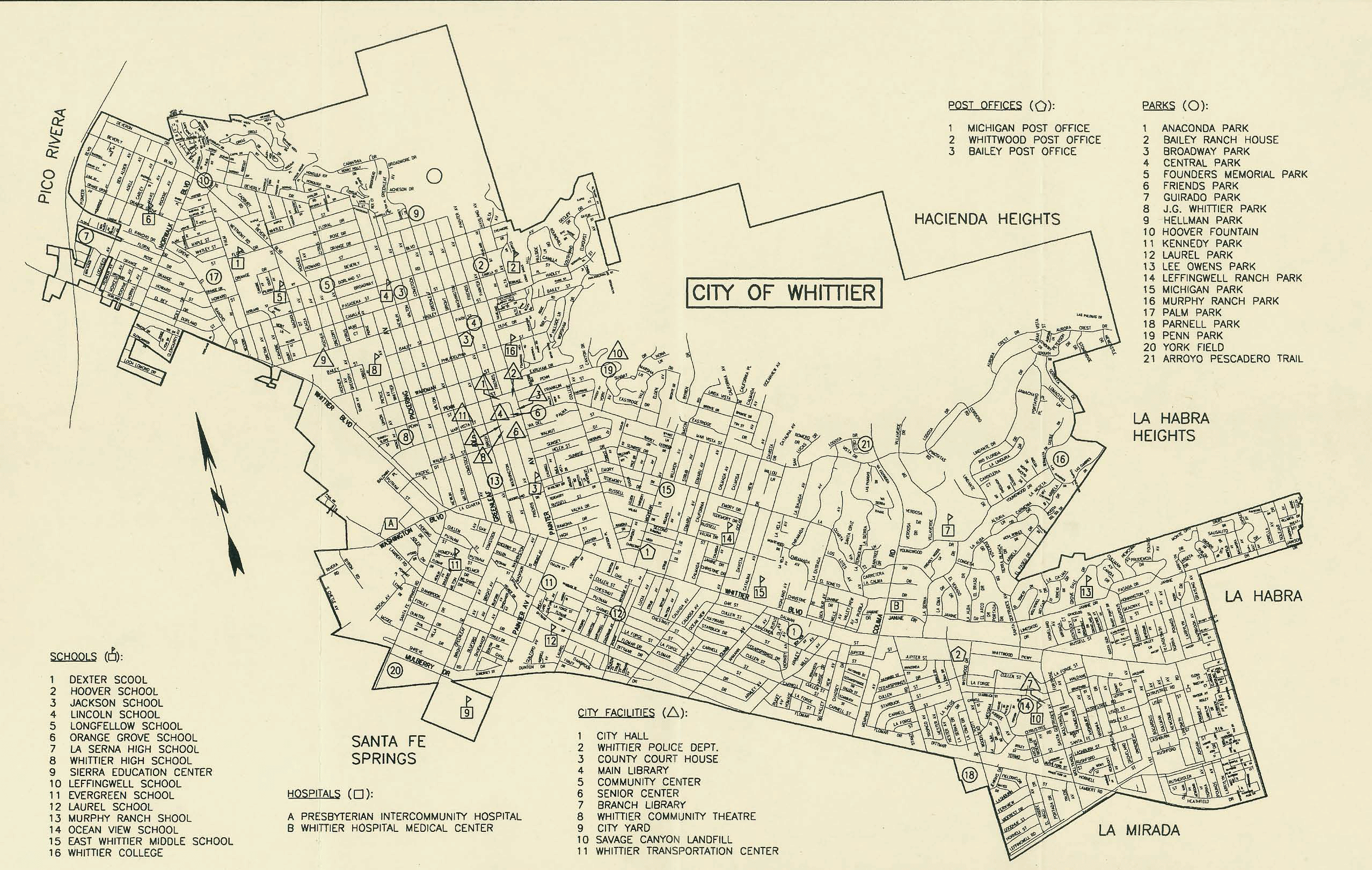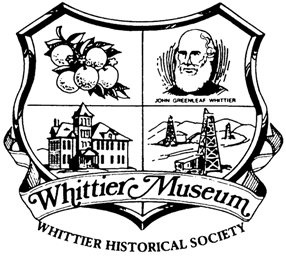Research Your Home

Tips and Resources for Researching Homes and Other Buildings in Whittier
- Gauge the Age of House. Try to determine the year your house was built by reviewing escrow papers and/or going down to Whittier City Hall’s Building Department and checking building permits on the property.
- Ascertain Old Address. In the 1960s as Whittier continued to grow, street addresses were changed to conform to the Los Angeles County numbering system. The Whittier Museum has the book, Whittier Street Number Changes, also available at the Whittier Public Library R 388.411 WHI. This book will allow you to find your old address given your new address or vise versa.
- Tax Rolls. Researching the tax rolls can give clues to the property owner and accessed value of the home. The Whittier Public Library houses City Tax Assessment ledgers from 1898 to 1935/36 and 1944/45 to 1949/50. The use of tax rolls is by appointment only.
- Use City Directories. Once you have an address and approximate date your house was built, use City Directories to locate your home under the address index and find the name of the occupant residing there. Once you have the name, you can look in the name index and possibly find out the inhabitant’s full name, occupation and spouse’s name. You should work backwards in the directories until your house is no longer listed and establish an approximate date for construction. A search through the years will show the different inhabitants of your home. The Whittier Library and Whittier Museum each have city directories from 1903 to 1977 when the directory was discontinued. The Whittier Museum has the address indexes combined and in a separate folder for easier reference and is also in the process of databasing this index on computer for even faster access (the museum could use more volunteers to help expedite this project). The library also carries the Haines Criss Cross directories covering 1972 to present.
- Newspaper Search. To locate articles on your home, builders or former residents, you can search the local newspapers for articles. The Whittier Library owns microfilm of the local Whittier newspaper from the late 1880’s to the present. The Whittier Museum has hard copies of the various local newspapers from the first paper in 1887 to 1958 and microfilm up to the 1990s. Actual copies of the newspapers may be viewed at the museum with archivist assistance. Newspaper indexes are available at the Whittier Library and their online catalog. It can be searched by keyword and by subject using an address or a person’s name. The online index covers 1888-1950 and 1990-date. At present the 1980’s index is on a cardfile. Ask at the reference desk for assistance. The Whittier Museum has a detailed index covering births, deaths and marriages from 1887 to 1930. An index covering 1931 to 1958 is in the works.
- Whittier History Clippings and Photographs. The Whittier Library has a Whittier History Room that contains a file of clippings and ephemera, as well as a small photograph collection. A partial index to the files is located at the Reference Desk. At present, the Whittier History Room can be accessed by appointment only. The Whittier Museum Archives has thousands of files on people, organizations, homes, businesses, churches and schools. The Archives Room also contains over 10,000 photographs of the same subjects, in addition to an index of the pioneer cemeteries in Whittier.
- Whittier History Books. Both the Whittier Library and Whittier Museum have copies of local histories that may contain information and photographs of your home or former owners. The Museum has some titles for sale as well:
Founders and Friends, R 979.493 PEA-a selective history of families, homes and business. Many photographs of early Whittier homes.
Old Whittier, 1904, R 979.493 WHI-an early Whittier photo booklet of houses and commercial buildings, all 1904 and before.
Pioneer Families of Whittier, R 979.49492 MAT-biographical family histories on pre-1900 settlers and builders of the city. Also contains a few photos of early Whittier homes.
Whittier Revisited, R 979.493 MAT-a concise history of Whittier from the time of the Indians to 1987. Includes the names and stories of prominent citizens of Whittier. - Sanborn Maps. These are Fire Insurance maps showing the “footprint” of buildings. The Whittier Library has these maps on Microfilm, Reel 71, WH 912.794 SAN. This reel contains Whittier maps from 1888, 1891, 1894, 1900, 1907, 1912 and 1925. The Whittier Museum contains these original maps as hardcopy, but their accessibility is limited because of their delicate nature.
- Further Reading. The Whittier City Hall’s Planning Department conducted a brief historical survey of 2500 buildings in Whittier. All the buildings surveyed were over 50 years old and located in the uptown area. The survey included descriptions of the homes and their condition. The Whittier Museum has a copy of this resource. Additional information can be gathered from the following books located at the Whittier Library:
Houses and Homes: Exploring Their History, 973 HOU.
How Old is This House, 728.028 HOW.
House Histories: A Guide to Tracing the Genealogy of Your Home, R 728.37 LIG.
A Field Guide to American Houses, R 728.83 McA. - Accessibility of the Records. Access to City Hall resources is available during normal business hours. City Hall is located at 13230 Penn St. (562) 567-9999. The central branch of the Whittier Public Library is located at 7344 S. Washington Ave., (562) 567-9900, and the Whittwood branch is at 10537 Santa Gertrudes Ave., (562) 567-9950. Many of the resources listed on this fact sheet are only available as reference materials and thus cannot be checked out from the library. The Whittier Museum is located at 6755 Newlin Ave. (562) 945-3871. The Museum is owned by the Whittier Historical Society Members. Access to the Archives Room is free, but by appointment only. The Archives Manager can assist you with your search when an appointment is made.
- Links. Check our Links page for additional resources.
